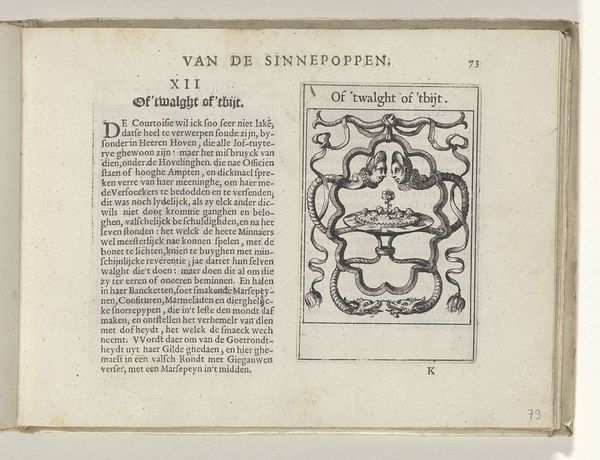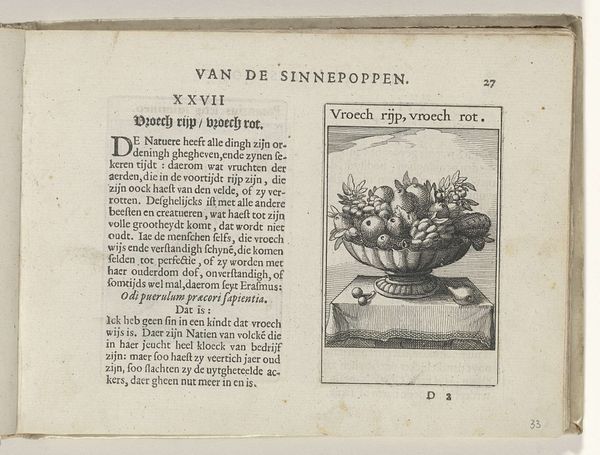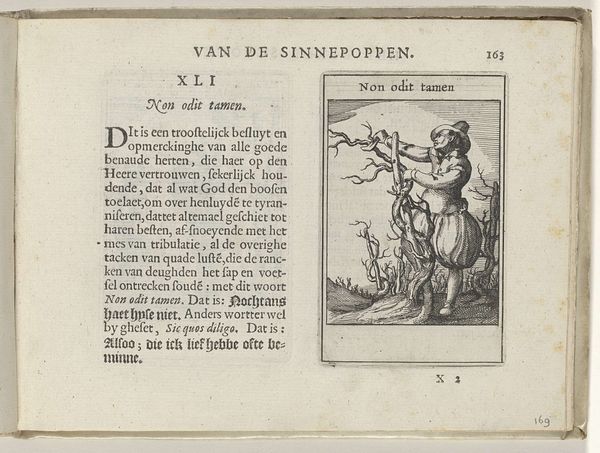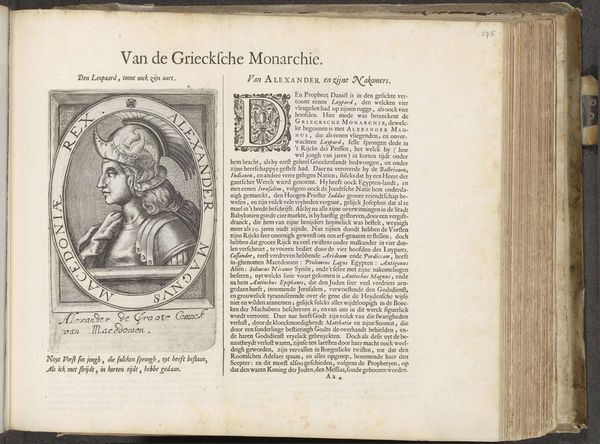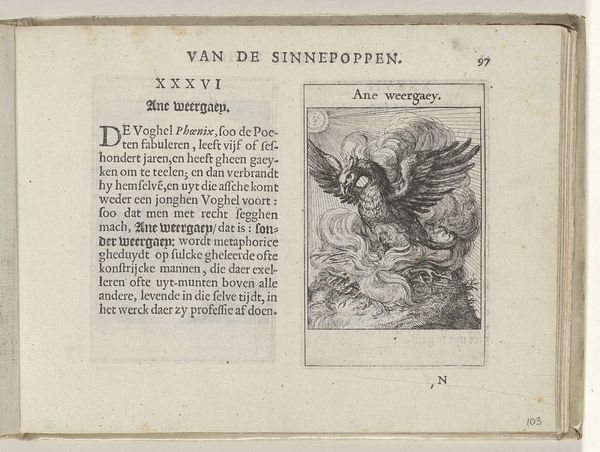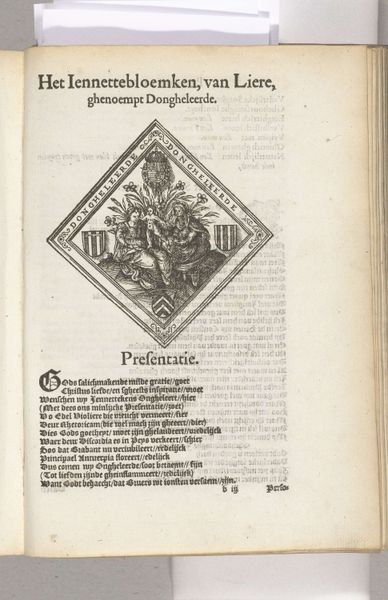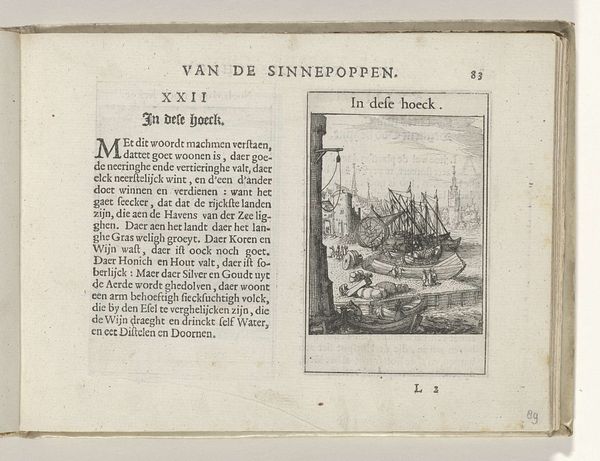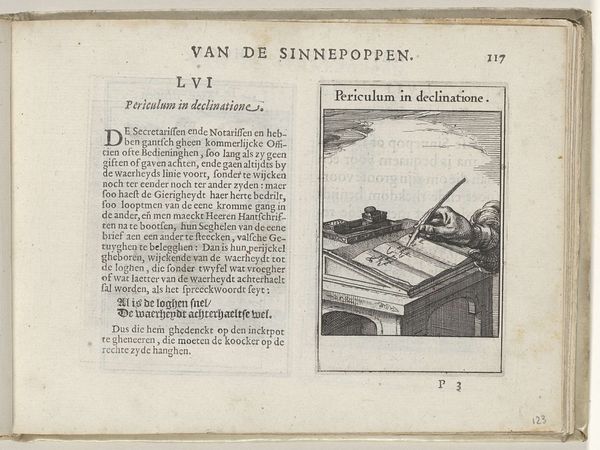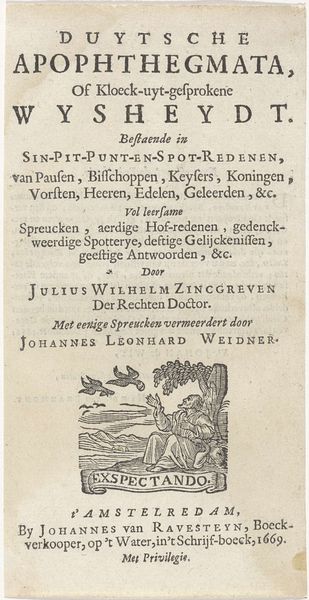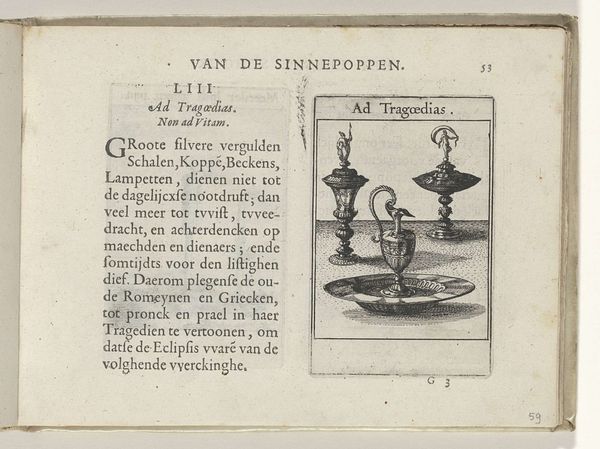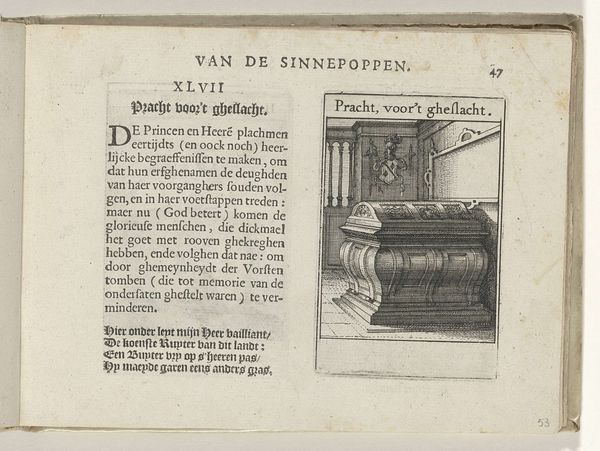
graphic-art, print, paper, engraving
#
graphic-art
#
aged paper
#
toned paper
#
dutch-golden-age
# print
#
sketch book
#
paper
#
personal sketchbook
#
ink drawing experimentation
#
pen-ink sketch
#
ink colored
#
sketchbook drawing
#
storyboard and sketchbook work
#
sketchbook art
#
engraving
Dimensions: height 137 mm, width 188 mm, height 95 mm, width 60 mm
Copyright: Rijks Museum: Open Domain
Curator: This engraving, "XLII 't Wil al muysen wat van katten komt" by Roemer Visscher, dates back to 1614 and is currently held in the Rijksmuseum. It presents a page from a book, complete with text and an elaborate heraldic shield. What are your initial thoughts? Editor: I’m struck by the detail within the heraldic shield. It seems almost like a collection of animal vignettes contained within a formal crest. The aged paper also makes it feel like an important historical document. What would have been the function of displaying this kind of crest, and how would this function have developed historically? Curator: That's an excellent observation. The heraldic shield and the accompanying text served as powerful visual and textual proclamations of identity, status, and lineage in Dutch society. The presence of animals speaks to power dynamics, almost as symbols to instill fear. Do you think that it carries a clear, concise message, or rather a message based on what the Dutch society held important during this era? Editor: I see what you mean, it probably resonated more strongly within its specific cultural context. Today, without that context, it’s more like a glimpse into the societal values and hierarchies of the Dutch Golden Age. It makes me think about the accessibility of art; does art always need a key for it to be fully comprehended? Curator: It's a really interesting question and gets right to the heart of the art-historical endeavor. Without some understanding of historical context, particularly regarding power, lineage, and status, much of the visual language would be lost. We could use art to decode society! Editor: So, studying pieces like this engraving isn't just about admiring artistic skill; it’s also a journey into understanding the social and political world that shaped its creation. Curator: Precisely! It underscores the role of art as a public declaration of values and its use by those in power, offering us insights into historical power structures and cultural identity. Editor: I learned that what looks like decorative work can be so politically revealing.
Comments
No comments
Be the first to comment and join the conversation on the ultimate creative platform.
